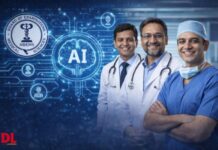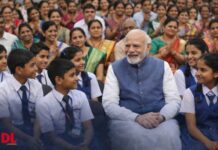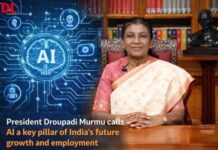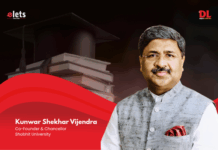The key architect of India’s telecommunication revolution, in an interaction with Ravi Gupta and Pravin Prashant, sam Pitroda talks about his vision for the Indian education sector
What is your vision for public information infrastructure and innovations in India?
As we move into a growth era, India needs to be globally competitive and needs to innovate. Both the President and the Prime Minister of India have focused on innovations. The President has talked about 2010-20 as a decade of innovations. Today, there is a political will to support innovations in all spheres. Taking this political will forward and translating it into action is a key challenge.
India has been innovating for centuries. However, for the last 100 years or so the country has lost its edge, while a lot of innovations have come from the US in the last 50 years. Today, India needs to create its own models of innovation rather than adopting a US model, as that will not solve the problems of our country. There is also an urgent need to create various development platformsfor homeland security, applications, UID, education, etc. The creation of these platforms is critical to empower millions of people around, and sure, the government is committed to creating this robust, universal, standardised, secure information infrastructure for the people of India.
What kind of innovations will be relevant for India and which should be the focus areas? There is an urgent need to create a broad platform for innovations that focus on the organisation and the system, rather than focusing on materials and technologies. Another important aspect is to have growth-based innovations that are sustainable, scalable and affordable. The innovations should affect people who are at the bottom of the pyramid, i.e. should be able to change the lives of those millions who are not in the mainstream. It is also important to create the required ecosystems for innovations like the venture capital, recognition for young talent, provision of facilities to people, and creation of an innovation environment at our institutions and then identifying the key drivers for innovations.
What can be done to trigger this at a more fundamental level? Traditionally, a few people have controlled information. People at the bottom of the pyramid don’t get thebenefi ts of this information. If information is democratised then opportunities can be given to millions and millions of young people. Looking at the telecom industry, the fi rst phase of the telecom revolution is beginning to end. The second phase is about to begin where the broadband platform will be provided for all. The major task in the second phase is to take highspeed broadband to 2.5 lakh panchayat members. Fibre will be taken to the doorsteps of panchayats.
How do you see the education system changing in India with the active play of ICT? The 11th plan is all about education, where the government will be spending 67 billion dollars on education. About Rs 6,000 crore have been approved by the cabinet to build a knowledge network. This network is about connecting 1,500 locations. The programme is about connectivity of the nodes. The schools, all universities and R&D institutes will be connected and scientists will begin to collaborate, and teachers will be able to share the resources. This programme has already been implemented, 15 nodes have been connected and are working.
Within 18 months, all the nodes will be connected and made operational. This will be the mother of all networks. Consolidation of old networks will also be done. The augmentation of
networks will be the key to connecting 2.50 lakh panchayat members. This is the kind of revolution the government is aiming for in three years.
How do you see the digital roadmap for India over the coming fi ve years? Multiple platforms should be set up, which should not take more than three years. It is important to have the broadband platform, the UID platform, the GIS platform, the application platform,
the security platform and the payment platform. The job of the government is to provide the platforms and see the larger and the holistic picture. People from various departments have to
come forward and work towards the accomplishment of the goals. On the national GIS plan for the country, the vision is that every bit of the physical asset, each and every building, road and street is mapped.
























